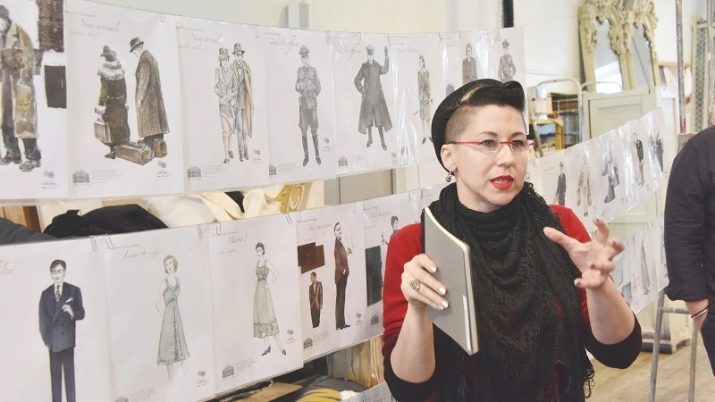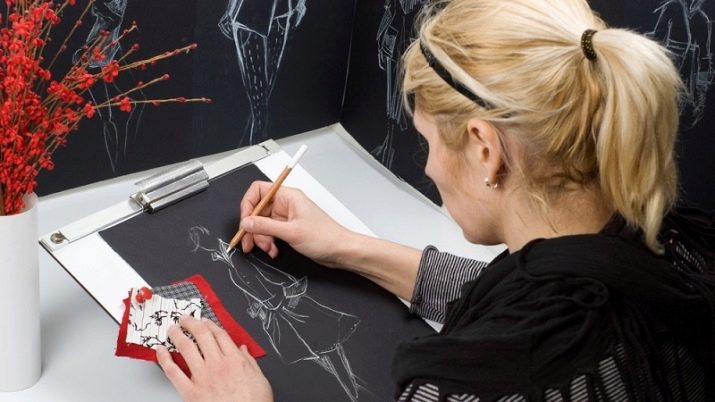Costume designer is one of the most sought-after profession in the modern world. This specialist is working hard and painstakingly to create any image of heroes. Undoubtedly, the costume designer lives a “small life” each time, preparing for the next performance or filming of a movie.
Features
The artistic activity itself appeared in the Stone Age. The first images were painted on stones and rocks. Nowadays, this profession has a broader and multifaceted concept. The costume designer is a professional who has knowledge in modeling scenic clothing items. His tasks include creating a visual image and interacting with costumers. This specialist builds a number of details, which ultimately reflects the essence of a character. The costume designer is an integral part of the creative group, which includes the director, dresser, director and make-up artist.
The costume designer also builds a trusting relationship with the actor, on whose way he begins to work.

Responsibilities
First of all, this specialist is studying the scenario. This will help to evaluate the atmosphere of the performance, the movie as a whole, to understand the relationship between the characters, and also to find out what their differences or similarities are. After the specialist determines the key points, he proceeds to study the features of the era, which is reflected in the script (items of clothing, materials, everyday life). Followed by creation of a costume plot. It includes sketches, images and photographs., which are agreed with the director and the crew.
Later, the costume designer begins the search for the necessary materials and details.In some cases, ready-made suits are purchased. If we are talking about creating clothes from scratch, then the artist directs the sewing process, and then the actors control the fitting of products. In case of inconsistency with the image, the costume is redone. In addition, the creator of the costume is present at the final rehearsals and filming. The specialist must understand how accurately he was able to convey the atmosphere of a particular era. Also, the behavior of the actors on the stage helps the costume designer determine his personal level of professionalism.

Knowledge and skills
The costume designer must have the following skills:
- be able to draw;
- own a sewing business and distinguish between clothing styles;
- understand the process of creating costumes;
- be interested in modern fashion;
- know the properties of fabrics and have the skill to work with processing (artistic) means;
- possess perseverance and a craving for painstaking work.
Besides, cultural workers must have an expanded horizons, be interested in various areas in art and music. Undoubtedly, the costume designer is a creative and multifaceted personality who is constantly looking for different sources of inspiration.
It is also noteworthy that this specialist does not sit still, but is constantly in the thick of things. Namely, he visits theaters, museums and concerts. It is also important for a specialist to find time for self-development.

Education
You can get the specialty "Costume Designer" in Russia and abroad.
As for Russian applicants, they should pay attention to the following educational institutions.
- VGIK. This specialty is received at the art faculty, it is called "Costume and Film and Television Designer."
- Moscow Art Theater. We are talking about the faculty, where they receive the specialty "Costume Design Technologist." Classes are taught according to copyright programs and individual plans. The priority is practical exercises.
- RGISI (Russian State Institute of Performing Arts). Training takes place at the production department. This is the oldest educational institution with a rich history. Its graduates are specialists of the highest level in the field of culture.
Workplace
The profession of costume designer is widely in demand in film studios, theaters and on television. A specialist can be either a freelance employee or be a staff member.
- Freelancer. He is hired to work on a specific project (theater, opera or dance production). After completing the training, a freelance artist may terminate collaboration or be involved in other projects.
- Shtatnik. A specialist is assigned to a particular theater or studio. He is always in place, even if work on the next project is completed. A full-time artist is not entitled to collaborate with other organizations. Its task is to immerse as much as possible into the "life" of a particular theater or film studio.
- Teacher. We are talking about highly qualified specialists who conduct training courses, give lectures at universities. Teaching artists can be both on staff and freelance.











